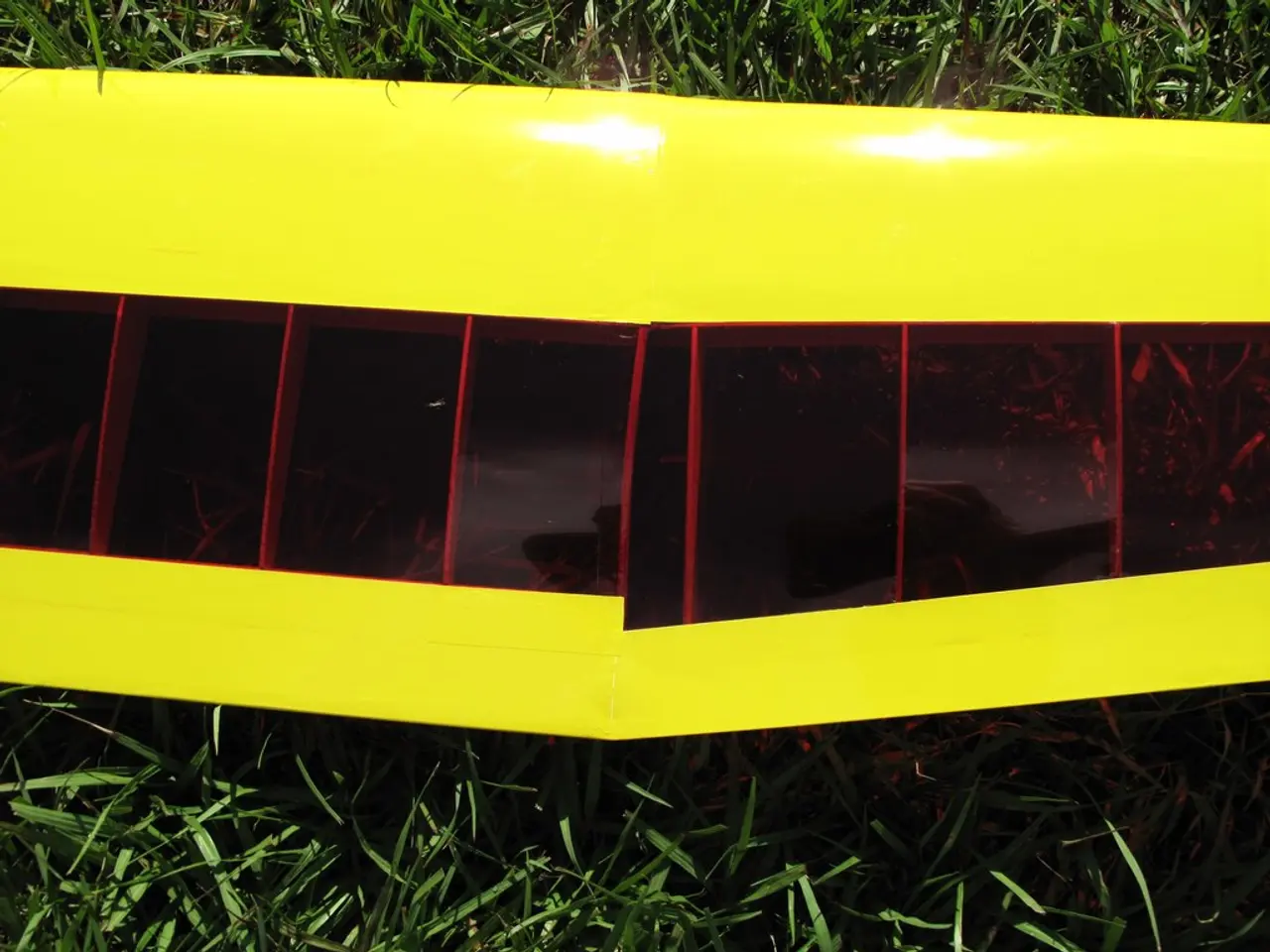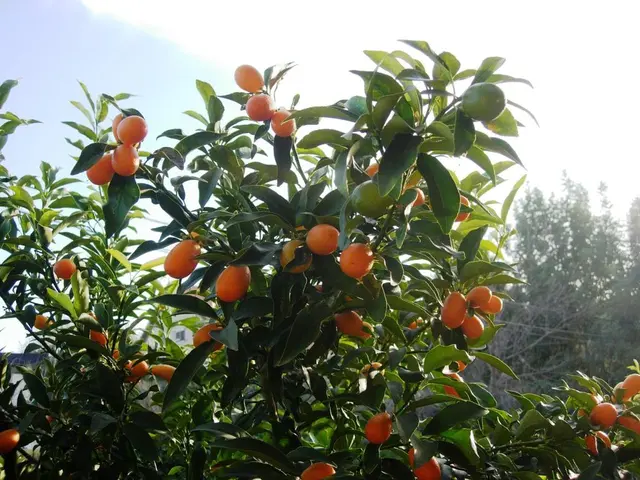Turfgrass exhibiting brown patches due to a fungal infection
In the realm of turfgrass maintenance, managing Rhizoctonia solani, the fungus responsible for brown patch disease, is a crucial task for maintaining healthy lawns. This article outlines key strategies for cultural, chemical, and monitoring practices to combat this common turfgrass disease.
**1. Cultural Controls**
A vital aspect of managing brown patch is implementing effective cultural controls. These practices focus on optimising the turfgrass environment to reduce the disease's likelihood.
- **Water Management:** To avoid overwatering, irrigate in the early morning hours, allowing grass to dry before nightfall. Prolonged leaf wetness can encourage fungal growth, so it's essential to reduce watering, especially during disease-activating periods. If possible, ensure proper drainage to remove excess water.
- **Mowing Practices:** Maintain lawns at the recommended height for your specific turfgrass species. Over-mowing or scalping can stress the plants and make them more susceptible to disease.
- **Fertilization:** Apply balanced fertiliser according to soil test results. Avoid excessive nitrogen, particularly during hot, humid periods when brown patch is most active.
- **Thatch and Soil Management:** Reduce thatch buildup and improve soil drainage. Aerate compacted soils to promote root health and prevent conditions that encourage fungal development.
- **Overseeding:** Use disease-resistant grass varieties, and overseed damaged areas to promote recovery and reduce bare spots where fungi can thrive.
**2. Chemical Controls**
In some cases, chemical controls may be necessary to manage brown patch effectively.
- **Fungicide Application:** Utilise fungicides labelled for brown patch control, particularly if cultural practices alone are insufficient. Apply fungicides according to label instructions and before disease symptoms become severe.
- **Soil Testing:** Conduct soil tests to identify nutrient imbalances or pH issues that may weaken turfgrass and make it more susceptible to infection.
**3. Monitoring and Prevention**
Regular monitoring and prevention are essential components of an effective brown patch management strategy.
- **Early Detection:** Regularly inspect lawns for signs of brown patch, such as circular patches of dead or dying grass, often with a “smoke ring” appearance during early morning.
- **Preventive Measures:** Address poor cultural practices such as excessive thatch, poor drainage, and improper irrigation before disease occurs.
In summary, these integrated practices help minimise brown patch outbreaks and maintain healthy turfgrass. Regular irrigation should be reduced, especially late in the day during disease-activating periods. If possible, irrigate in the morning. Excessive water should be properly drained. By following these guidelines, you can help keep your lawn healthy and vibrant.
---
**Summary Table: Rhizoctonia solani Management in Turfgrass**
| Practice | Description | |-------------------------|-----------------------------------------------------| | Water Management | Morning irrigation; avoid overwatering | | Mowing | Maintain proper height; avoid scalping | | Fertilization | Balanced, based on soil tests; avoid excess nitrogen| | Thatch/Soil Management | Reduce thatch; aerate; improve drainage | | Overseeding | Use resistant varieties; overseed damaged areas | | Fungicide Application | Use labeled fungicides as needed | | Soil Testing | Identify nutrient/pH issues | | Monitoring/Prevention | Inspect lawn; address cultural issues early |
These integrated practices help minimise brown patch outbreaks and maintain healthy turfgrass.
- To create a healthy and disease-resistant home-and-garden space, consider implementing effective cultural controls in your gardening routine. This may involve optimizing water management, maintaining correct mowing practices, carefully applying fertilizers, managing thatch and soil, and overseeing the use of disease-resistant grass varieties for overseeding.
- In some cases, gardening may require chemical controls to successfully combat disease. By utilizing fungicides specifically designed for brown patch control and conducting soil tests to address nutrient imbalances or pH issues, you can minimize the impact of turfgrass diseases on your lawn.




